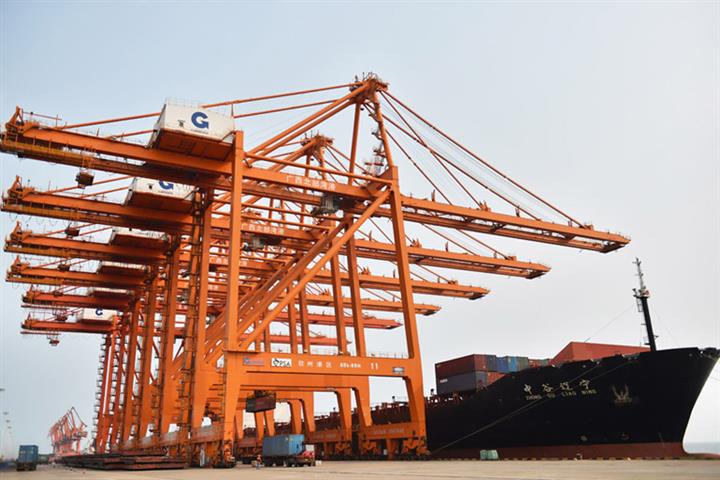 China’s Trade With Central, Eastern Europe Exceeded USD100 Billion for First Time in 2020
China’s Trade With Central, Eastern Europe Exceeded USD100 Billion for First Time in 2020(Yicai Global) Feb. 8 -- China’s trade with Central and Eastern European countries surpassed USD100 billion for the first time ever last year as cooperation has increased quickly due to the welcoming business environment, better connectivity, and the Covid-19 pandemic.
China's trade volume with 17 Central and Eastern European countries totaled USD103.5 billion last year, up by 8.4 percent from 2019, rising faster than the Asian country's global figure, Gao Feng, commerce ministry’s spokesperson, said at a press conference on Feb. 4.
The CEE tally has been climbing by 8 percent on average every year since 2012 when China launched its 17+1 initiative in 2012 to increase cooperation with the countries between it and Western Europe. That number is more than twice the growth rate of China's trade with the European Union.
China's 17+1 Initiative
The 17+1 initiative has become the most important cooperation mechanism for China and the 17 nations since 2012, Shi Zhiqin, international relations professor at Tsinghua University, told Yicai Global.
The platform covers numerous countries with diversified industrial and agricultural products, effectively integrating resources in the region, to fully meet Chinese consumers' needs, Shi added.
China and Europe have been expanding their logistics networks in recent years to facilitate trade, said Shi. Poland, Hungary, the Czech Republic, Lithuania, and Slovakia have become important stops along the China-Europe Railway Express, the professor added.
But there is still room for growth. China’s foreign direct investment in Europe jumped nearly 60 percent in 2019, presenting the fastest growth rate for China globally, according to the commerce ministry. But FDI into the 17 Central and Eastern European countries made up less than 3 percent of the total.
CEE nations' economies have been expanding strongly since the EU recovered from the 2008 financial crisis, according to Shi. But they lack domestic funds so their demand for Chinese capital has increased, Shi added.
China's FDI in CEE in the fields of energy, minerals, infrastructure, logistics, auto parts, and finance totaled USD3.1 billion by Dec. 31, 2020. Meanwhile, the 17 countries splurged USD1.7 billion on FDI into China.
Green Energy Could Fuel New Deals
Cooperation, particularly in the field of new energy, is likely to continue, said Shi.
Late last year, the EU decided to cut its greenhouse gas emissions by at least 55 percent by 2030 from 1990. But CEE nations, such as Poland and the Czech Republic, have been slow to propose their plans to reduce coal burning as they are worried about the high economic costs of such a shift, Qin Yan, chief carbon analyst at Refinitiv, told Yicai Global.
CEE countries’ attitudes and efforts are crucial to the implementation of the emission reduction plan and the China-Europe energy cooperation, Qin added.
Editor: Emmi Laine, Xiao Yi